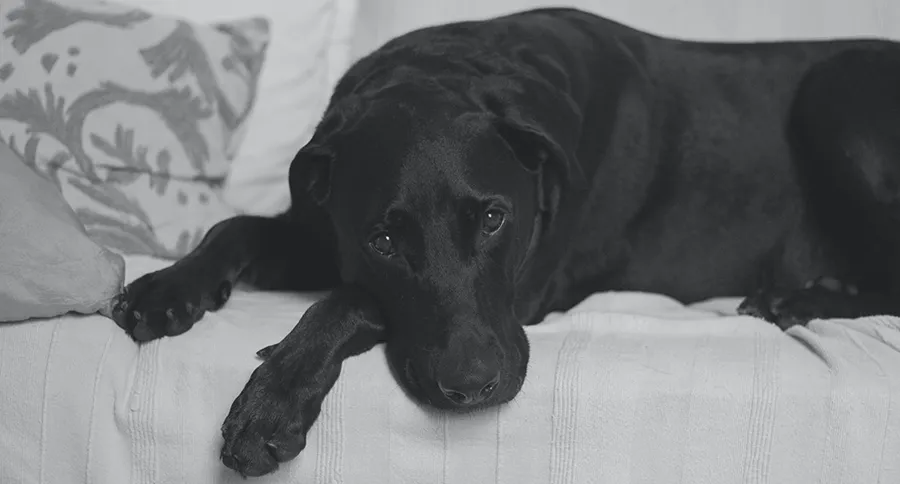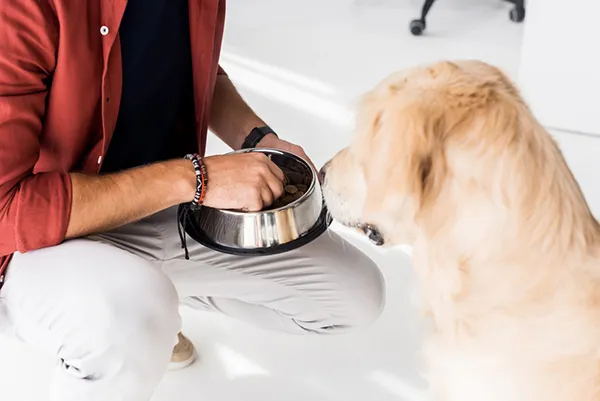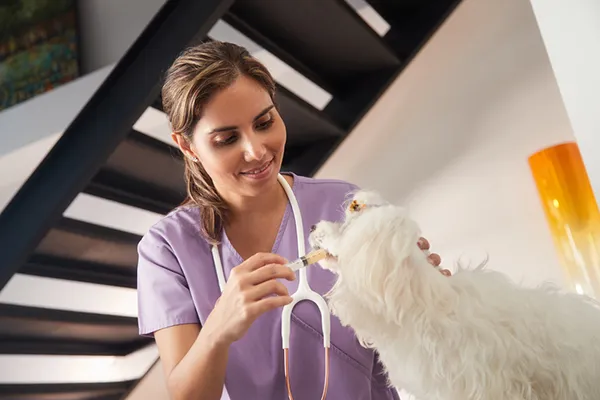It can be distressing for any pet parent when their beloved dog refuses to eat. Just like humans, dogs can lose their appetite when they’re not feeling well, due to illness, stress, or other factors. While one missed meal might not be a cause for immediate alarm, a persistent refusal to eat can signal an underlying health issue that requires attention. Understanding why your dog won’t eat is the first step, but knowing what dogs can eat and not eat can make all the difference for their overall health. This comprehensive guide from Dog Care Story will help you navigate this common challenge, offering practical methods to encourage eating and identifying appropriate foods for your dog’s recovery.
Why Your Dog Might Be Refusing Food
A dog’s loss of appetite, medically known as anorexia, can stem from a variety of causes, ranging from minor upsets to serious health conditions. It’s crucial for pet parents to observe their dog’s behavior and consider potential reasons for their sudden disinterest in food.
The most common reasons a dog will lose their appetite include:
- Illness or Infection: Many illnesses, from dental problems to systemic infections, can cause discomfort and reduce appetite.
- Disease: Chronic conditions affecting organs like the kidneys, liver, or gastrointestinal tract often lead to appetite suppression.
- Recovering from Surgery: Anesthesia and post-surgical pain or discomfort can temporarily reduce a dog’s desire to eat.
- Mourning a Death: Dogs can experience grief and stress, which may manifest as a loss of appetite.
- Aging: Senior dogs may have a reduced sense of smell or taste, or underlying age-related conditions that affect their hunger.
- Stress or Anxiety: Changes in environment, separation anxiety, or fear can impact a dog’s eating habits.
- Medication Side Effects: Some medications can cause nausea or reduce appetite as a side effect.
When to Seek Veterinary Attention
While it’s normal for a dog to occasionally skip a meal, certain accompanying symptoms warrant immediate veterinary consultation. Early intervention can prevent conditions from worsening and ensure your dog receives the care they need.
You should contact your veterinarian as soon as possible if your dog exhibits any of the following symptoms in conjunction with a loss of appetite:
- Vomiting
- Lethargy or extreme fatigue
- Significant weight loss
- Persistent diarrhea
- Gagging or difficulty swallowing
- Wheezing or coughing
- Abdominal pain or discomfort
These symptoms could indicate a serious underlying health problem that requires a professional diagnosis, examination, and potential testing to determine the cause and appropriate treatment.
Effective Methods to Encourage Your Dog to Eat
Getting a sick dog to eat can be a challenge, but there are several strategies you can employ. The best method will depend on your dog’s individual preferences and the reason for their appetite loss. It may take some patience and experimentation to find what works best.
The Waiting Game
If your dog won’t eat, the initial step is to allow them some time. Healthy adult dogs can generally go for a day or two without eating anything, provided they are drinking water and not showing other severe symptoms. It is normal for a dog to occasionally turn down a meal, much like humans aren’t always hungry. You might consider leaving your dog’s food out for them to graze on throughout the day if they become hungry. However, ensure they have constant access to fresh water.
Tempting with Special Treats
When your dog isn’t feeling well, you could try enticing them with food they don’t normally receive. Human foods like plain, cooked chicken (boiled, unseasoned) or even meat-based baby food (without onion or garlic) can be so irresistible that your dog might be encouraged to eat. Start with a small amount of these special foods to see if they pique your dog’s interest. If they eat it, you can gradually mix it with their regular dry food to encourage a return to their normal diet. Just be sure not to overindulge your dog in these treats, as it can negatively affect their health if done excessively.
 Sick Labrador resting comfortably on a white couch
Sick Labrador resting comfortably on a white couch
Exploring New Food Options
If your dog consistently struggles with dry kibble, trying a different brand or type of food might be beneficial. Many pet stores offer sample packs, allowing you to test if a new brand appeals more to your dog. Alternatively, mixing in some wet food with their dry kibble can significantly stimulate a dog’s appetite. The stronger aroma and softer texture of wet food can be much more appealing than dry food alone, especially for a dog with a reduced sense of smell or taste.
Enhancing Food Appeal
Heating your dog’s food slightly can dramatically increase its smell and palatability. Sick dogs often experience a hindered sense of smell and taste, making their regular food less appealing. Warmed-up food releases a more fragrant aroma, which can entice your dog to eat. This boost in smell can also enhance the taste experience, encouraging them to continue eating after the first bite. Similarly, adding warm broth (chicken or bone broth, unsalted) to your dog’s food not only helps with smell and palatability but also adds an additional layer of flavor. If your dog has grown tired of their current food’s taste, a flavorful broth might be the perfect incentive to get them eating again.
The Comfort of Hand-Feeding
Sometimes, a sick dog just needs a little extra comfort and encouragement. Trying to hand-feed individual pieces of your dog’s food can be a gentle and reassuring method. This close interaction may help comfort a dog who isn’t feeling well and make them feel safe enough to eat. This process may take a while to fully accomplish, but with patience, your dog might gradually start eating from their bowl after you’ve hand-fed them a few pieces. It’s a way to rebuild their trust and association with food during a vulnerable time.
 Owner gently hand-feeding kibble to their dog
Owner gently hand-feeding kibble to their dog
Considering Medication Effects
Some medications, particularly antibiotics, can reduce a dog’s appetite or cause an upset stomach. If your dog is currently on any medication, carefully read all instructions for potential side effects. It’s often recommended to wait at least fifteen minutes after administering certain medicines before offering food. This waiting period allows the medicine to settle in your dog’s stomach, potentially coating it and reducing the chances of irritation when food is introduced. Always consult your vet if you suspect medication is affecting your dog’s appetite.
Allowing Them to Eat Grass
If your dog won’t eat its normal food but keeps trying to eat grass, you should generally let them. While eating grass can sometimes induce vomiting, this might actually be a good thing if whatever is making your dog feel ill will be eased by expulsion. Your dog’s instincts may be leading it to eat grass for this purpose. Just make sure to keep your dog well-hydrated, especially if they do vomit. However, if your dog vomits more than twice, or consistently eats grass every time they are outside, that’s a clear sign you should take them to the vet. If your dog is eating grass or showing other unusual eating habits, it’s also worth considering what can happen if my dog eats poop, as such behaviors can sometimes signal underlying issues.
 Two brown dachshunds curiously eating grass outdoors
Two brown dachshunds curiously eating grass outdoors
When to Consult Your Veterinarian
Visiting the vet is always a good idea if your dog is sick and won’t eat. A professional can help you pinpoint what ails your dog and recommend the best course of action to help them feel better. Your vet can also prescribe medications, whether to address the underlying illness or specifically to encourage appetite. For dogs with prolonged appetite suppression due to a health condition, your vet may prescribe or recommend a medicinal appetite stimulant. These stimulants can work by reducing nausea or by mimicking hormones that trigger hunger. The correct stimulant will depend on the root cause of your dog’s appetite loss, making veterinary diagnosis essential.
Syringe Feeding as a Last Resort
Force-feeding via a syringe is a more drastic measure and should only be considered if other methods have failed and your dog hasn’t eaten for two days or more. If recommended by your vet, you can use a syringe to feed your dog liquids like broth or watered-down wet food. If your vet has prescribed liquid medication, a syringe can also be used for administration. However, it is crucial to speak with a vet before attempting syringe feeding, as it needs to be done correctly to avoid negative health effects such as aspiration pneumonia. Your veterinarian can demonstrate the safe technique during an examination.
Best Foods to Offer a Dog That Won’t Eat
When your dog is sick and refusing their regular food, offering palatable and easily digestible alternatives can make a significant difference. These foods are often more appetizing and gentler on an upset stomach.
Wet Food
If your dog typically eats dry kibble, simply introducing wet food can be a game-changer. For many dogs, wet food is perceived as an exciting treat due to its rich aroma and texture. As an added benefit, wet food has a higher water content, which can help keep your dog hydrated, a crucial factor when they’re not drinking much.
Meat-Based Baby Food
Unseasoned, meat-based baby food (such as chicken, lamb, or turkey) can be an excellent option for a sick dog. It’s easy to eat, often quite tasty, and can be nutritious. Always check the ingredients carefully to ensure there is no onion, garlic, or other harmful additives, as these are toxic to dogs.
Bone Broth & Chicken Broth
Bone broth and plain chicken broth are incredibly mild, nutritious, and very easy on an upset stomach. If your dog has a suppressed appetite, broth can be a good way to deliver essential nutrients and fluids. The savory flavor can also be highly appealing to a dog who has lost interest in their regular food.
Shredded Chicken
Plain, unseasoned shredded chicken is a popular choice for sick dogs. Dogs love chicken, and when boiled and shredded into small, manageable pieces, it’s easy for them to digest. Avoid any seasonings, as these can further upset a sensitive stomach.
Chicken and White Rice
A classic bland diet for dogs with digestive issues is boiled chicken and white rice. These ingredients are commonly found in commercial dog foods and are gentle on the stomach. Ensure the chicken is thoroughly cooked and unseasoned, and the white rice is plain. Cut the chicken into very small pieces to make it easy for your dog to eat.
Plain Canned Pumpkin
Pumpkin is renowned for its digestive benefits due to its high fiber content. It also contains numerous vitamins, including iron, magnesium, vitamin A, and vitamin C. Offer your dog a few tablespoons of plain, unseasoned canned pumpkin (not pumpkin pie filling, which contains sugars and spices harmful to dogs).
Other Healthy Human Foods (with Caution)
While commercial dog foods are formulated for balanced nutrition, some human foods can be healthy additions when used appropriately and in moderation. Always consult your veterinarian before introducing new foods into your dog’s diet, especially when they are unwell. For those interested in specific dietary approaches or adding variety, understanding options like what raw meat can huskies eat can provide further insights into canine nutrition.
- Cooked Eggs: A good source of protein, calcium, antioxidants, and various vitamins. Always cooked, never raw.
- Omega-3s: Found in fish oil, beneficial for joint health and skin.
- Mushrooms: Some edible varieties are packed with vitamins and nutrients, but ensure they are safe for dogs. Avoid wild mushrooms unless positively identified as safe.
The Critical Importance of Hydration
When your dog won’t eat, it’s easy to focus solely on food intake, but water intake is arguably even more critical. Dogs can naturally go longer without food than without water. While a dog can survive for several days without food (typically five to seven days or more), their tolerance for not drinking water is much shorter, usually no more than three days. Dehydration can quickly become a serious concern. It’s vital to encourage water consumption and not to test your dog’s limits. However, never force your dog to drink, as this can lead to aspiration pneumonia.
It’s important to get your dog medical attention as soon as possible if they are not eating or drinking for 48 hours or more.
Encouraging Water Intake
If your dog is showing no interest in drinking water, try these tricks to encourage hydration:
- Ice Cubes: Offer ice cubes for your dog to lick; some dogs find this more appealing than still water.
- Water on Fingers: Gently offer water on your fingers for your dog to lick.
- Pedialyte: If recommended and approved by your veterinarian, you can offer unflavored Pedialyte to help replenish electrolytes.
- Add Ice to Water Bowl: The cold temperature and slight novelty might encourage drinking.
 Golden Retriever peacefully resting on a bed with a blanket
Golden Retriever peacefully resting on a bed with a blanket
Recognizing Signs of Dehydration
Keep a vigilant eye on your dog for any signs of dehydration. Familiarize yourself with these common symptoms:
- Loss of appetite
- Panting excessively
- Lethargy and weakness
- Loss of skin elasticity (skin tenting when gently pulled up)
- Dry and sticky gums
- Dry nose
- Sunken, dry-looking eyes
Seek immediate veterinary attention for your pet if they are showing signs of dehydration. Your veterinarian can provide subcutaneous fluids to quickly rehydrate them while simultaneously addressing the underlying cause of their sickness.
Foods to Strictly Avoid When Your Dog is Sick
When your dog is unwell, preventing further gastrointestinal upset or toxicity is paramount. As a general rule, avoid feeding them anything too rich or fatty. Sometimes, dogs get sick precisely because they’ve consumed too many rich human foods, so cutting back on such treats is often advisable. Beyond offering beneficial foods, it is paramount to be aware of what food a dog can't eat to prevent further illness or complications. If your dog is already sick, check carefully that they haven’t had access to any of the following highly toxic substances. Pet parents must also specifically know what human meat you should never feed your dog as certain types can be highly toxic.
| Don’t Feed Your Dog: | Because… |
|---|---|
| Xylitol | Can cause a rapid drop in blood sugar and liver failure. |
| Avocado | Seeds can cause an obstruction; the persin in the fruit can cause illness. |
| Grapes or Raisins | Can lead to acute kidney failure. |
| Caffeine | Highly toxic and can be fatal, causing heart problems and tremors. |
| Onions or Garlic | Can cause red blood cell damage, leading to anemia or poisoning. |
| Alcohol | Can cause vomiting, diarrhea, breathing problems, and potentially death. |
| Milk or Other Dairy Products | Can cause diarrhea and digestive problems due to lactose intolerance. |
| Human Medication | Can cause illness and potentially death; never give human meds to dogs. |
| Chocolate | Contains theobromine, which can cause vomiting, diarrhea, and death. |
| Sugar | Sugary foods can lead to weight gain, dental issues, and diabetes. |
| Macadamia Nuts | Can cause muscle weakness, tremors, vomiting, and hyperthermia. |
| Raw Eggs | Risk of salmonella or E.coli, and can interfere with biotin absorption. |
| Raw Fish or Meat | Risk of parasites, bacteria (e.g., salmonella), and thiamine deficiency. |
| Uncooked Yeast Dough | Can rise in the dog’s stomach, causing bloating, pain, and alcohol poisoning. |
| Fat Trimmings | Can cause pancreatitis, a serious inflammation of the pancreas. |
| Spices, Baking Powder, or Baking Soda | Can be toxic to dogs and upset their digestive system. |
| Bones | Can cause choking, splintering, and internal injuries to the digestive tract. |
| Fruits with Seeds or Pits | Seeds and pits can cause digestive obstructions or contain cyanide. |
| Salt | Too much salt can lead to salt poisoning, causing dehydration and tremors. |
Frequently Asked Questions About Dogs Not Eating
When Shouldn’t I Feed My Sick Dog?
If your dog has been vomiting or experiencing diarrhea, it is generally recommended to wait at least twelve hours after the last episode before attempting to feed them again. Feeding too soon can irritate the stomach further and cause more vomiting. If vomiting or diarrhea persists for two days or more, always take your dog to the vet.
How Much Should I Feed My Sick Dog?
The amount of food to offer a sick dog depends on their size, the type of illness, and their individual appetite. It’s best to consult with your veterinarian for specific guidance. Beyond vet advice, let your dog guide you. Offer small, frequent meals rather than large ones. If your dog eats some but then refuses more, try waiting a while before offering food again.
Does Illness Affect a Dog’s Sense of Smell?
Smell is a dog’s most powerful sense, and various factors can indeed influence it. Allergies, nasal infections, and even old age can decrease a dog’s sense of smell. A dry nose can also temporarily hinder their ability to smell. While illness itself doesn’t always directly affect the sense of smell, any condition impacting the nasal passages or overall vitality can indirectly reduce their interest in food by making it less aromatic.
What Else Can I Do to Help My Dog?
Beyond food and water, ensuring your dog’s comfort is paramount. Make sure they have a comfortable, quiet bed to rest on. If they’re up to it, short, gentle walks can be beneficial. It’s also crucial for you, as the owner, to remain calm. Dogs are highly perceptive and can pick up on human emotions; if you’re stressed or nervous, it can exacerbate their own anxiety.
How Long Can a Dog Survive Without Food?
Dogs can typically go three to five days without food, but this is not ideal and should be avoided. If your dog has gone two days without food, it is highly recommended to call a veterinarian immediately if you haven’t already. More critical than food intake is water intake. If you cannot encourage your dog to eat, prioritize convincing them to drink water, but never force them.
Should I Feed My Dog After They Throw Up?
It is generally best to withhold food from your dog for a few hours after they vomit. This allows time to observe their behavior for any other concerning symptoms or if the vomiting continues. Always ensure they have access to fresh water, even after vomiting.
Should You Force-Feed a Sick Dog?
Force-feeding, typically using a syringe, can be considered if your dog has not eaten for more than 48 hours. This drastic measure should only be undertaken after your veterinarian has examined your pet and explicitly approved force-feeding. It is vital to learn how to force-feed your pet safely, as improper technique can lead to aspiration pneumonia or further stress. Your veterinarian can demonstrate the correct procedure during an examination to ensure you can administer food safely and effectively.
 Veterinary technician carefully force-feeding a small dog with a syringe
Veterinary technician carefully force-feeding a small dog with a syringe
When to Seek Immediate Veterinary Care: The 48-Hour Rule
If your dog is still refusing food after 48 hours, regardless of whether they show other symptoms, you must seek immediate veterinary care. Prolonged appetite loss can quickly lead to dehydration, malnutrition, and a worsening of any underlying condition. An expert team of veterinary professionals can accurately diagnose and treat your furry friend before their condition becomes more severe, providing the necessary interventions to help them recover and regain their appetite.
Navigating your dog’s loss of appetite can be stressful, but with the right knowledge and timely action, you can help them on the road to recovery. Always prioritize hydration and never hesitate to contact your veterinarian for expert advice and support.
